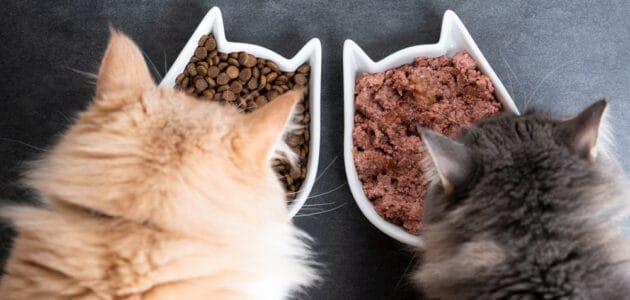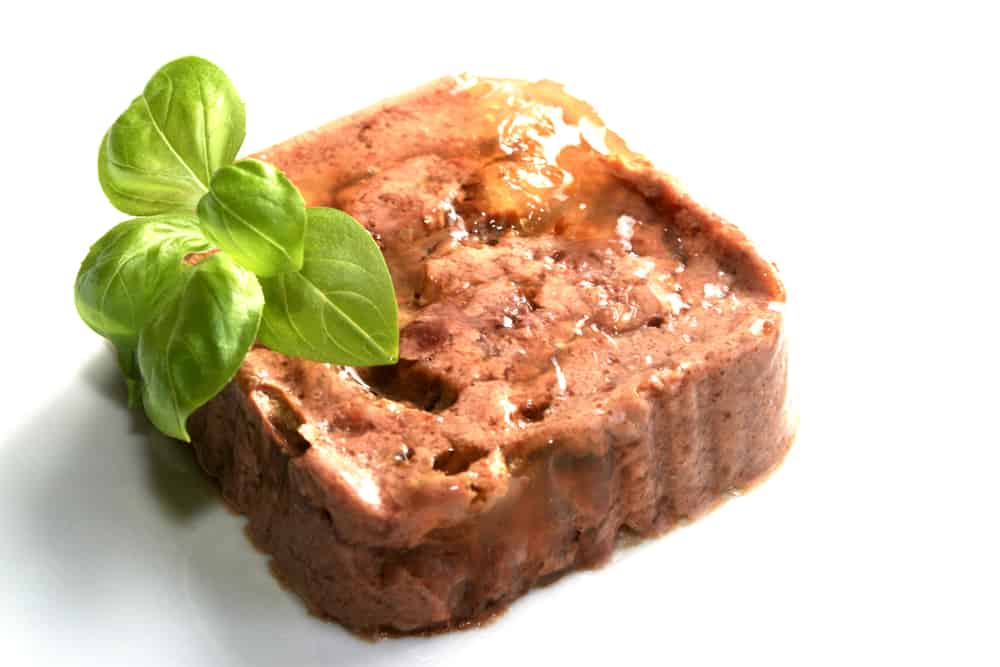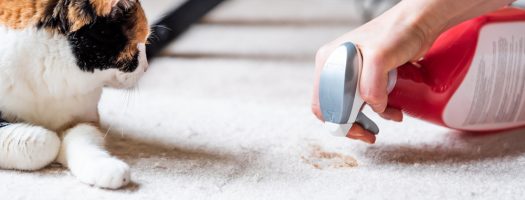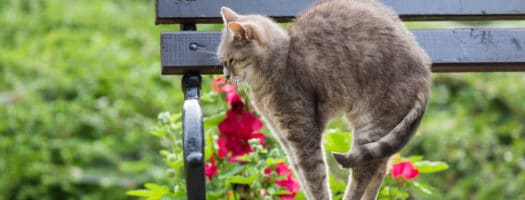Do Cats Need Wet Food?

Deciding what to feed your cat or kitten is not a choice that is easily made. Understandably, you want to take your time selecting a food that is packed with nutrition, agrees with your pet’s specific dietary needs, and isn’t too harsh on the wallet. Throughout all of your research about cat food, you may be wondering, do cats need wet food?
Wet food can be very beneficial to cats, but it does come with its own set of drawbacks. In this article, we will discuss the main differences between wet and dry cat food, look into what veterinarians recommend, and breakdown the pros and cons of a wet cat food diet.
Wet vs. Dry Food
The most notable difference between wet and dry food is, obviously, that one of the foods is comprised of wet, moisture-filled ingredients, and the other is made up of dry, crunchy kibbles.
Both types of food contain the nutrients necessary to keep your cat healthy; however dry food tends to be more carb- and calorie-heavy, while wet food is lighter in calories and carbs, requiring a slightly larger amount to keep your cat sated.
The Veterinary Recommendations
Though veterinarians across the globe have narrowed down the exact nutritional needs of your cat, they have yet to settle the dry versus wet food debate. Some vets are in favor of a complete wet food diet and others tend to recommend a full dry food diet. Both options are valid, and the choice really depends on you and your cat’s needs.
The main conclusion of this debate is that your cat does not need a strict wet food diet, just like they don’t need an exclusive dry food diet. All your cat really needs is a consistent source of high-quality proteins, fats, and carbohydrates to keep them healthy; whether that is through wet or dry food diet, or even a mix of both, is up to you.
You may want to keep in mind when making your decisions on which food to purchase that cats who are nursing, very young kittens, or cats with certain health issues (which we will discuss below) can greatly benefit from regularly eating wet food.
Benefits of Wet Food
To help you make your mind up about what type of food to feed your cat, look over these benefits of wet cat food.
High Moisture Content
One of the most important wet food benefits, all wet cat foods have a higher moisture content than dry food; their moisture content falls in the range of 75 to 78 percent, while the moisture content of dry food is around 6 to 10 percent.
Cats do not have a strong urge to drink water, stemming from their evolution as desert animals. In the wild, most of the moisture content that a cat needs is obtained from eating their prey. That being said, dehydration is a serious issue in today’s domestic cats, most notably indoor cats who do not hunt. Wet food can be a great way to encourage hydration and health in your cat, especially if you have trouble getting your cat to drink water or if you have an older cat.
This water content can also help your cat feel fuller throughout the day. This can lead to a decrease in begging for food and can be a great tool if you are trying to encourage weight loss in your cat.
Grain-Free Recipes
Like most other carnivorous animals, cats do not need a large amount of grains in their diet. The grains that they receive in the wild are typically found in the stomachs of any prey that they catch.
Wet food is usually low in grain content and in carbohydrates, unlike dry food. This can be healthier overall for your cat and great for keeping your cat at a healthy weight – the high carb content in dry food often leads to weight issues in cats.
Packed With Protein
A quality source of proteins is one of the most important factors in feeding your cat a balanced diet. Cats break down amino acids at a higher rate than other animals, meaning that they need more proteins in their diet to keep up with this turnover.
Wet food offers higher protein content than dry food. The protein in wet food may also be of slightly higher quality due to the fact that it does not need to be dried out and baked into a kibble; it can remain more or less in a ground-up, cat-friendly state.
Health Benefits
For older cats, cats who are nursing, and cats with health issues such as regular urinary tract infections or kidney disease, wet food can be a simple, easy to digest source of nutrients. The high-water content helps to combat or relieve bladder and kidney issues, and the digestibility is great for older cats who don’t have the digestive system of their youth.
Additionally, this digestibility is great for nursing cats who need an easy source of proteins, vitamins, and minerals. Wet food can keep a pregnant or nursing cat healthy as they give birth and begin raising their kittens.
Adds Variety
Much like humans, cats can grow bored of their food if they are eating the same thing day after day. With dry food, there is not a lot of room to vary the taste and texture of your cat’s diet; wet food has many different varieties (which we will talk about later). A varied diet can encourage your cat to eat more and provide them with valuable meal-time enrichment.
Drawbacks of Wet Food
Most things don’t come without drawbacks, and wet cat food is no different. Review this list of potential negatives to make a completely informed decision.
Expensive
Unfortunately, wet cat food tends to run on the more expensive side. This is due to the way the ingredients are packaged and the fact that you will often have to feed 2 to 3 cans per day, depending on your cat’s needs.
Expires Quickly
Wet food also expires quickly and needs to be refrigerated when opened. And unlike dry food, you cannot leave wet food out in your cat’s bowl for more than 4 hours as it can spoil. This may be a negative for owners that are considering free feeding their cat.
Side Effects
In some cats, the texture of wet food can cause diarrhea. This is because some cat’s stomachs are not able to handle the richer tastes and ingredients in wet food. If your cat has a history of digestive issues like this, you may want to reconsider feeding wet food. You can also try out a cat probiotic to help put a stop to stomach upsets.
Additionally, a diet of wet food has a slightly higher chance of causing dental disease in your cat. This is because kibbles can remove plaque and buildup from teeth as your cat crunches on it. With wet food, there is nothing to crunch. However, this risk is minimal, especially if your cat is in otherwise good health.
Picky Eaters
Some cats just don’t like wet food, even if you try to get them to love it. If you have a picky eater, you may not be able to win their heart over with any kind of wet cat food, meaning that your cat likely won’t eat enough of its meals to be properly fed.
Potential Messes
More of a concern for those cats with longer or whiter fur, wet food has a tendency to get stuck on or stain your cat’s fur. This can be made worse if your cat is a messy eater or if they are unlikely to let you touch them for a quick cleaning.

How to Choose a Wet Cat Food
If you’ve decided to feed your cats a wet food diet, you may now be wondering exactly how to choose the perfect food for your cat. Read on to view our selection recommendations.
AAFCO Guidelines
The Association of American Feed Control Officials is a non-profit organization that crafts a set of guidelines that quality cat foods should adhere to. Checking to make sure a certain food meets AAFCO guidelines can help you determine if it is of good nutritional quality or not.
Keep in mind that the AAFCO does not regulate or place restrictions of food manufactures, but in order to use certain labeling phrases, companies will have to meet their guidelines.
Special Dietary Needs
When selecting a food, check the label to ensure that any ingredients your cat needs to avoid (such as wheat or corn) are not in the mix. You can also look for a list of protein sources; if the food contains real proteins first and lists a limited amount of “meat by-products,” it is typically a higher-quality food.
Price
It is important to select a wet food that you can afford to feed your cat on a consistent basis. Narrow down wet foods by shopping by price range and try to find the highest quality of food available in that bracket.
Types of Wet Cat Food
There is a large variety of wet cat foods on the market. To make an informed selection you should understand the main types of wet food available.
- Pate: Pate wet food is blended to be extremely smooth. You will not see any type of chunk in this food. It is a great choice for older cats and kittens.
- Grilled: Grilled wet food contains the most chunks. It is great for cats who enjoy eating food as close to real meat as possible.
- Flake: Flaked food has chunks, but they are a little more broken down than in grilled food. Most cats love the texture of flaked food.
- Gravy: Gravy-filled foods are typically pates, but you can find grilled and flaked food in gravy too. This type of food has a lot of liquid and is great for cats in need of moisture or those with health issues.
How Much Wet Food Should You Feed a Cat?
Once you’ve decided on the perfect wet food for your cat, you may be wondering exactly how much you should feed them. Based on veterinary guidelines, your cat should be receiving between 24 and 35 calories per pound, per day. This comes out to be anywhere between 240 and 350 calories per day for a 10-pound cat.
You can then look at the amount of calories listed on your chosen wet food and divide the amount of daily required calories by the amount of food calories. For example, if your chosen food has 80 calories per can and your cat needs 250 calories a day, you would divide 250 by 80, giving you 3.125. This indicates that your cat needs 3.125 cans of 80 calorie food per day to stay healthy and maintain their weight.
Keep in mind that required calorie intake varies based on your cat’s activity levels and optimum healthy weight. Always consult with a vet if you have questions about your cat’s weight or feeding needs.

Crafting a Balanced Diet for Your Cat
Selecting the perfect diet for your cat can be a long journey full of trial and error. While your cat does not need a strict wet food diet, they do need a stable source of vitamins, minerals, and essential nutrients. It is up to you (and your cat!) to decide whether they receive that balanced diet through wet food, dry food, or a combination of both.




